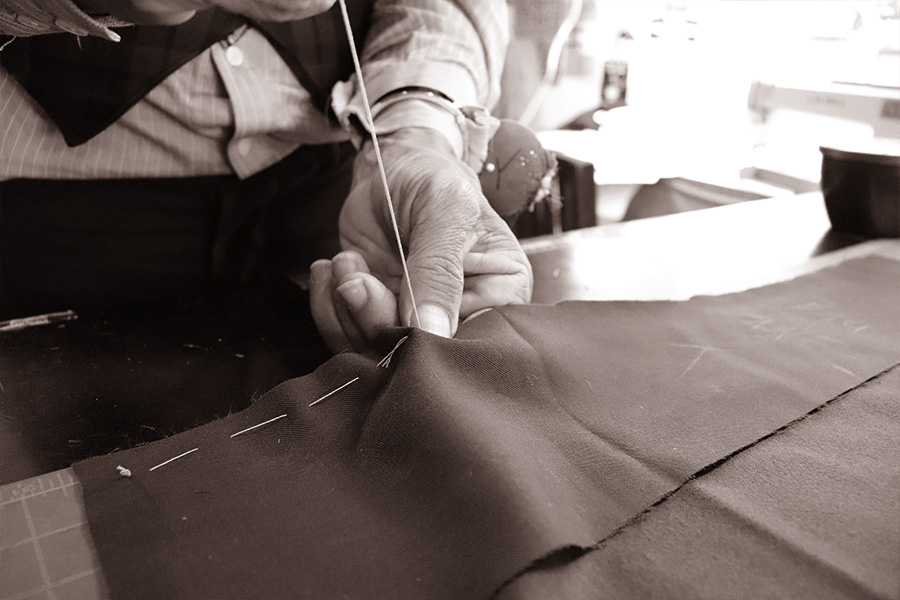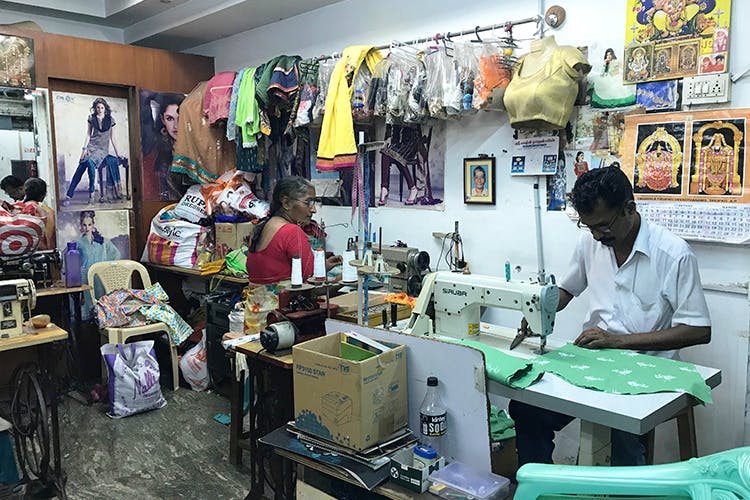Professional Tailor Perth: Crafting Custom Suits for Every Celebration
Professional Tailor Perth: Crafting Custom Suits for Every Celebration
Blog Article
Recognizing the Tailoring Refine: From Material Choice to Final Suitable for the Perfect Wardrobe
The tailoring procedure is a complicated interplay of art and scientific research, beginning with the important decision of material selection and finishing in the exact adjustments of last fittings. Each material type brings distinct top qualities that influence not just the aesthetic charm but additionally the garment's durability and viability for different celebrations.
Significance of Textile Selection
Selecting the appropriate textile is important in the tailoring procedure, as it directly influences the convenience, sturdiness, and total aesthetic of the last garment (tailor perth). The selection of textile establishes the foundation for the garment's efficiency, functionality, and style. Various textiles have one-of-a-kind properties, such as weight, stretch, and breathability, which can significantly affect exactly how the garment drapes and fits the body
Furthermore, fabric choice impacts the garment's long life and ease of treatment. High-quality fabrics can hold up against wear and tear, preserving their appearance and structure over time, while lower-quality materials might result in pilling or fading. Furthermore, the ideal material adds to the garment's capability to change throughout occasions and periods, consequently boosting convenience.
A customized piece made from a suitable fabric not just showcases workmanship however likewise elevates the wearer's confidence. Comprehending the subtleties of material selection is critical for any kind of tailoring endeavor. It makes certain that the final product not just satisfies the aesthetic wishes of the client yet also lines up with useful demands, consequently achieving a harmonious balance in between form and feature in the customized wardrobe.
Kinds Of Fabrics and Their Uses
Comprehending the numerous sorts of textiles offered is vital for making educated decisions throughout the tailoring process. Each textile has special qualities that determine its suitability for particular garments and celebrations.
Cotton, known for its breathability and gentleness, is ideal for sportswear and summer season clothes. Its convenience permits it to be tailored into every little thing from shirts to gowns. Wool, on the other hand, is favored for its warmth and framework, making it an outstanding option for official suits and outerwear - tailor perth. Its natural flexibility aids garments keep shape gradually.
Silk emanates deluxe and is lightweight, making it ideal for eveningwear and delicate blouses; nevertheless, it needs careful handling because of its frailty. Linen, with its distinctive coating, is a preferred choice for warm climates, offering a crisp and airy feeling, however it wrinkles quickly, which might influence the garment's look.
Artificial textiles, such as polyester and nylon, deal resilience and resistance to wrinkles, making them suitable for everyday wear and active clothes. Comprehending these material types and their buildings permits for better decision-making, making certain that each tailored item not just fits well yet additionally straightens with the designated objective and occasion.
The Tailoring Strategies Explained
The art of customizing depends on a selection of methods that change fabric into well-fitted garments. Central to this procedure is pattern composing, where a dressmaker produces layouts based upon the client's measurements and wanted design. This preliminary step makes sure that the garment will fit the user appropriately before any cutting occurs.
Once patterns are developed, cutting strategies enter into play. Precision is vital as mistakes can result in misfitting garments. Tailors frequently make use of different cutting methods, such as single-layer cutting for intricate layouts and multiple-layer reducing for performance on typical patterns.
Basting is one more important strategy, enabling tailors to momentarily stitch textile assemble for an initial fitting. This approach provides the possibility to evaluate the drape and total silhouette prior to final sewing.
Seaming strategies, consisting of flat-felled seams and French joints, boost the garment's durability and visual allure. Tailors also use techniques such as interfacing and cushioning to give framework pop over to this web-site and shape to certain locations, like shoulders and collars.
Finally, completing strategies, including hemming and side ending up, guarantee the garment's long life while offering a sleek appearance. Together, these methods develop the backbone of efficient tailoring, resulting in elegant, custom-fit garments.
Fitting Changes and Considerations

Key considerations consist of the shoulder fit, which needs to neither droop nor limit movement, and the sleeve size, which ought to allow for comfy arm movement while preserving a polished appearance. Furthermore, modifications at the waistline can improve the shape, with options to allow out or absorb material as needed.
The surge of trousers is another crucial aspect; it should sit conveniently over the hips without creating pain, enabling for ease of activity. Hemming lengths for both trousers and skirts ought to mirror the user's preferred design while respecting percentages.

Maintaining Your Tailored Clothes
Constantly comply with the care label instructions, which might advise completely dry cleaning for fragile textiles or maker washing for more durable products. Stay clear of frequent laundering, as this can put on down the textile and change the garment's shape.
Storage is just as crucial; usage cushioned wall mounts for layers and jackets to maintain shoulder framework, and store trousers folded up neatly or hung to stop creasing. Protect garments from straight sunlight, which can discolor colors and damage fibers.
In addition, regular assessments for minor fixings can stop larger concerns. Look for loose switches, tearing joints, or signs of moth damage, resolving these problems without delay to preserve the garment's stability.
Lastly, take into consideration seasonal rotation. Using customized pieces in moderation allows fabrics to recuperate, extending their life-span. By implementing these upkeep methods, you can make certain that your tailored garments continue to be as beautiful as the day you first wore them, improving your suitable wardrobe for years to come.
Conclusion
The tailoring process, encompassing textile choice, experienced strategies, and accurate suitable adjustments, plays a critical role in developing garments that improve both comfort and style. Comprehending the significance of upkeep extends the life of customized garments, solidifying their value in a well-curated wardrobe.
Choosing the right fabric is crucial in the customizing process, as it straight influences the convenience, resilience, and general aesthetic of the last garment. The option of textile sets the foundation for the garment's style, performance, and efficiency. Different materials have special homes, such as breathability, weight, and stretch, look at this now which can considerably affect how the garment drapes and fits the body.
The art of tailoring counts on a range of methods that change fabric into well-fitted garments.The customizing procedure, encompassing fabric option, skilled strategies, and precise suitable adjustments, plays helpful resources an important function in creating garments that enhance both convenience and style.
Report this page